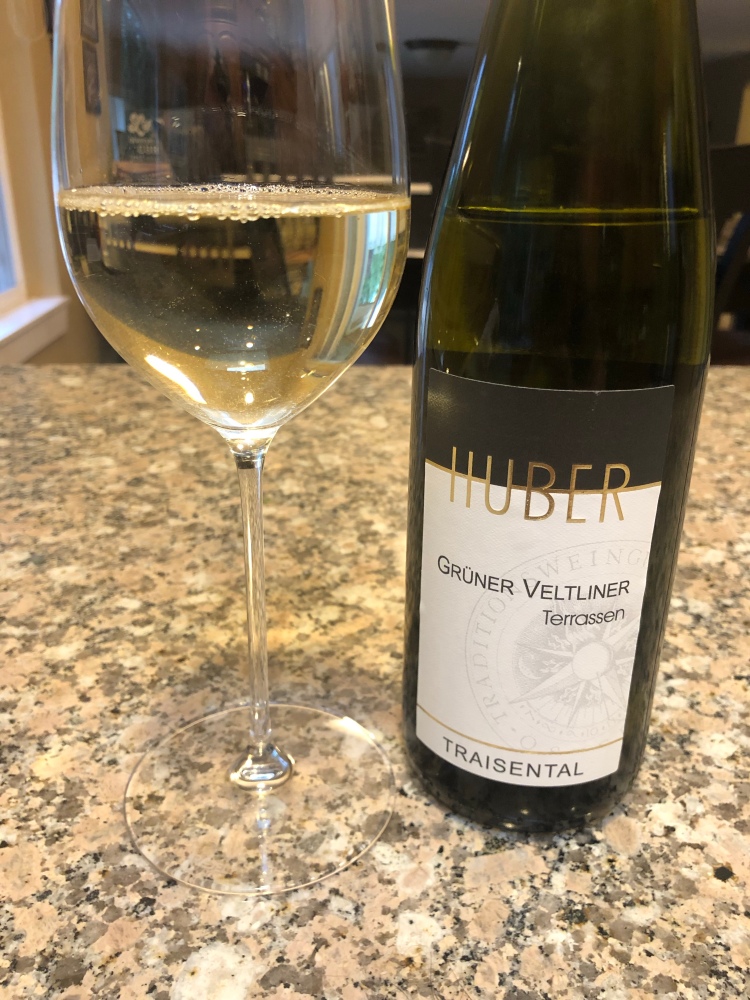
Grüner Veltliner (GV) is a light bodied, crisp white wine that hails from Austria. It is believed to be a cross between Savagnin (parent to Sauvignon Blanc and Gewürztraminer to name a few) and St Georgen (an ancient white grape identified in 2000). The wine underwent many name changes over the centuries but became known as Grüner Veltliner in 1930. The grape variety was always in the distant shadows behind the legendary white wines of France but after WWII, it began to garner more attention. Winemaker Lenz Moser introduced a new trellising method to the vines to improve grape quality. This change catapulted the respect the wine received. Today, it accounts for about one-third of the total grape production in Austria. It has similar qualities to Sauvignon Blanc, especially at younger ages.

GV is made in 2 distinct styles but only one is commonly available in the US. This style is young and brightly acidic. The other style is made using the best quality grapes and are oak and bottle aged for up to a total of 6 years before coming onto the market. Due to this long aging, these command higher prices. Definitely worth a try if you can find them! Austrian wines have similar designations to France and Italy based on wine quality. In Austria, they have DACs (Districtus Austriae Controllatus) which define the grape varieties, limiting alcohol levels, area specific wine qualities, and terroir (the complete scope of environmental factors that can affect a wine). About two-thirds of grapes grown in Austria are white varieties (leaving one-third to red grapes like Blaufränkisch and Zweigelt). The vineyards are found east of the Alps, on the east side of the country, where it shares borders with Slovakia, Slovenia, Hungary, and the Czech Republic. While it may seem like this is a colder area, the summers are warmer with temperatures ranging from 77-87℉. This temperate climate allows for grapes to maintain their notable acidity.

The wine I am drinking is a 2019 Huber GV from the Traisental DAC. I decided to get an early start on Oktoberfest and pair it with a schnitzel from a local European restaurant. It also happened to come with German potato salad, spaetzle with brown gravy, and cucumber salad. The wine is a pale yellow with the most minimal bubbles. It has watery legs that run rather quickly down the sides of the goblet. The aromas of sour lemon, white grapefruit, green pear, white peach, and lime juice fill my nose when I inhale deep. The light bodied, boldly acidic, wine tastes of bitter lemon pith, slightly under ripe pears, white peaches, honeydew, and wet stone. I love how the acidic slices thru the fat the tender schnitzel is fried in. The citrus notes in the wine accentuate the lemon juice notes squeezed over the schnitzel. The stone fruit notes are lovely with the buttery schnitzel. The mild sweetness in the cucumber salad makes the wine a little flabby, so they are not the best pairing but still worth drinking. The acid in the potato salad matches that of the wine. This pairing is also wonderful because of the creaminess in the potatoes being offset by the acid in the wine. The wine is a little too light in texture to match the brown gravy on the spaetzle but it also will not stop me from enjoying the two together! Hopefully this gives you some other ideas if you aren’t much of a beer drinker come Oktoberfest time!
-TheLooseTannin